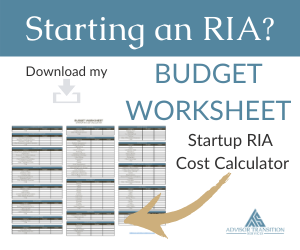The RIA industry has grown quickly over the last few years. As general awareness of the industry has increased over time, so too has its popularity.
For years, the focus has been on advisors leaving large wirehouse firms to start or join RIAs (a.k.a. “breakaways”). Many advisors who successfully started RIAs recognized the growing trend and capitalized on that opportunity by positioning themselves as knowledgeable resources willing to provide a platform for other breakaways to join.
As aggregator RIAs grew and multiplied, so did the number of breakaway advisors. The idea that an advisor could “go independent” without the risk and cost associated with starting their own business was a popular concept. Moves were being made that seemed to benefit all parties.
Fast forward to current day. While the breakaway trend is still very much alive, a new trend is emerging. It is referred to as the “lift-out”. Lift-outs are situations in which advisors are leaving RIAs to join different RIAs or start their own. During advisors’ initial transitions, many made decisions based on limited information due to the complex nature of the process. Now they’re recognizing that their preferences have changed. Maybe they’re longing for more freedom, self-branding, or full financial control. Perhaps, in hindsight, their initial decision was made too quickly with not enough due diligence. Whatever the reason, changes are being made.
Some of the RIAs that capitalized on the growing breakaway trend have also begun to reevaluate their business models. Acquisitions can cause growing pains in even the strongest firms, causing a need for drastic changes to infrastructure, technology, and staffing.
As advisors start to understand the strengths and weaknesses of their current RIAs, they are conducting a more in-depth level of due diligence. They’re weighing their options and calculating their upside potential. The lift-out trend is gaining popularity.
So, what exactly does a lift-out entail? The answer is different for everyone, and you might just find that it depends on that contract you signed with your current RIA.
In many cases, a lift-out is much less involved than a traditional transition, in terms of logistics. Especially if you’re planning to use the same custodian. Most institutions will allow you to switch accounts from one RIA to another with simple, e-signature eligible, client-signed forms. The client even gets to keep the same account number.
The problem is, your custodian has a current working relationship with the RIA you work for. It’s their decision whether to accept you onto their platform as a separate entity (in the case of you starting your own RIA). Many times, the decision is made based on the language written into the original contract you signed. If there’s a chance the move will damage an existing relationship, you might be out of luck. At that point, your only choices are to get the permission of your RIA first, or to switch custodians. Both potentially tough tasks.
It goes without saying, an attorney with specialized experience in the financial services industry is one of the first people to consult when considering a lift-out. He or she will be able to examine your existing contract and help you develop a transition strategy that prevents problems. The legal process is just as important in a lift-out situation as a breakaway situation.
Scott Matasar at Matasar Jacobs LLC, a Senior Securities Litigation, Enforcement and Regulatory Defense Attorney, offers a transitioning advisor consultation at a flat rate that includes transition advice and follow up conversations, as well as ancillary services such as negotiating discounts on promissory notes and dealing with team disputes over dividing up books of business. Contact Scott to discuss your next steps before making any major decisions.
Once you understand your legal situation and have permission from your custodian, you’ll need to have a plan of attack for the transition. Just like you would (or did) in a breakaway situation. For more information, or to speak with a transition consultant about the process, contact Grier Rubeling, or visit our website at Advisor Transition Services.




